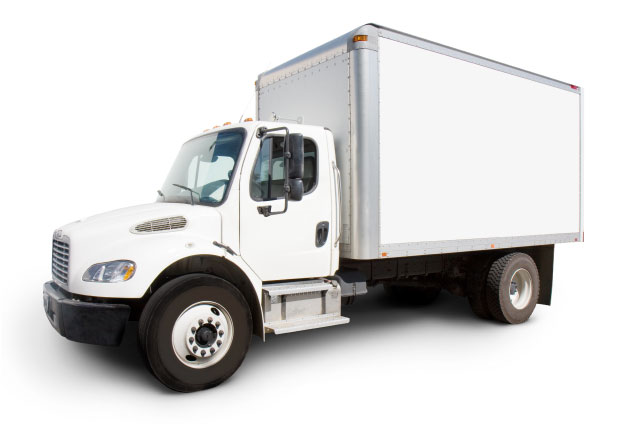Solo Heavy Lifting: Techniques and Tips to Try
Posted on 17/06/2025
Solo Heavy Lifting: Techniques and Tips to Try
Heavy lifting, whether in the gym, at the workplace, or at home, is a demanding physical task that requires careful attention to safety and technique. When you're undertaking solo heavy lifting, these considerations are magnified, as you don't have spotters or help on hand. This comprehensive guide will cover practical techniques, tips, and best practices for effective and safe heavy lifting alone, equipping you with the knowledge you need to avoid injury and maximize your strength-training or work-related efforts.
Understanding Solo Heavy Lifting
Solo heavy lifting comes into play across various scenarios, including strength training, moving heavy objects at home, or managing industrial tasks. While group lifting distributes the burden, solo lifting places all the physical stress on your muscles, joints, and connective tissue. That's why a thorough understanding of proper technique and preparation is crucial.
Risks of Lifting Heavy Objects Alone
- Injury: The risk of musculoskeletal injuries, such as back sprains, herniated discs, or muscle tears, increases without aid.
- Fatigue: Lifting on your own can accelerate fatigue, leading to poor form and increased danger.
- Ineffective Lifting: Incorrect technique reduces lifting efficiency and may result in dropped loads or accidents.
Solo heavy lifting requires a proactive approach--equipping yourself with knowledge and strategies is your first step to ensuring both safety and effectiveness.

Essential Preparations Before Lifting Heavy Objects Alone
Preparation is often overlooked but is a cornerstone of safe solo heavy lifting. Follow these steps before attempting any heavy workload by yourself:
Assess the Load and Environment
- Know the Weight: Estimate the object's weight. For lifting in the gym, use known values; for awkward items at home or in the workplace, research or test its heft with caution.
- Check the Shape: Bulky or irregularly shaped objects require additional care since they may shift or slip.
- Inspect the Path: Ensure your walkway is clear, free from obstacles, slip hazards, and tripping points.
- Identify Safe Destinations: Decide where the load will be set down and make sure the drop zone is ready and safe.
Warm Up and Mobilize
- Full-body Warmup: Engage in 5-10 minutes of light cardiovascular activity (e.g., brisk walking, jumping jacks) to increase overall body temperature.
- Dynamic Stretching: Mobilize your joints with dynamic movements--arm swings, hip circles, leg swings, and torso rotations.
- Activation Exercises: Use bodyweight squats, glute bridges, or light resistance movements to "wake up" your major muscle groups.
Taking the time to prepare your body and environment is the smartest way to prevent costly mishaps during heavy lifting by yourself.
Solo Heavy Lifting Techniques: Safe and Effective Methods
Mastering the correct techniques for solo heavy lifting is vital for performance and injury prevention. The following fundamentals apply whether you're lifting weights alone at the gym, or moving boxes at home:
Use Your Legs, Not Your Back
- Bend at your hips and knees: Lower yourself by flexing your hips and knees, not by rounding your back.
- Keep your back flat and chest lifted: Maintain a neutral spine; imagine there's a rod running from your head to your tailbone.
- Drive through your heels: As you lift, use your legs to push the ground away, keeping the load close to your body.
Keep the Load Close to Your Body
- Lifting with the object at arm's length strains your back and reduces stability.
- Hug the object to your torso or center it directly under your grip.
Engage Your Core Muscles
- Tighten your abdominal and lower back muscles before and during the lift.
- This creates a natural "weight belt" that protects your spine and improves your power.
Lift Smoothly and Avoid Jerking Movements
- Move in a controlled, steady motion without sudden jerks.
- Jerky movements can throw you off balance and increase injury risk.
Proper Breathing Methods
- Inhale as you set up for the lift.
- Exhale steadily through the effort or, for maximum bracing, use the "Valsalva maneuver": hold your breath and brace during the hardest part, then exhale as you finish.
Never Twist While Lifting
- If you need to move a load in another direction, turn your whole body (by moving your feet), never by twisting your spine.
These techniques can be applied for deadlifts, squats, bench press, overhead lifts, and everyday heavy lifting tasks. Consistently using them reinforces safe patterns and builds greater overall strength for solo lifting.
Solo Weight Lifting in the Gym: Tips for Safety and Performance
If you're aiming to lift heavy weights alone at the gym, additional considerations will keep you safe--and help you crush your goals.
Choose Your Exercises Wisely
- Prioritize free weights: Barbells, dumbbells, and kettlebells recruit more muscles and build better functional strength. But be mindful of your limits and technique.
- Use machines for isolation: Machines can be safer when exhausting your muscles with heavy loads, as they guide movement and offer built-in safeties.
Set Up Safety Bars and Use Racks
- On squats, bench presses, and other barbell lifts, always use a power rack with safety pins or arms set below your range of motion.
- This feature "catches" the weight if you fail a lift and prevents you from being pinned.
Spot Yourself--The Smart Way
- Train to never need a spotter by choosing a conservative weight that allows you complete the set with solid technique.
- Learn "roll of shame" and other escape maneuvers for failed bench presses (with an empty bar or bumper plates only).
Progress Gradually
- Increase weights in small increments--don't jump to a new personal best if you're training solo.
- Record your weights, sets, and reps to monitor fatigue and improvement.
Use Proper Equipment for Solo Lifting
- Weightlifting belts: When lifting near max effort, a belt increases spinal stability.
- Wrist wraps and knee sleeves: Offer extra support when joints and connective tissue are under heavy strain.
- Lifting straps: Help maintain grip on heavy deadlifts or rows.
- Chalk: Reduces hand slippage from sweat.
Having the right equipment for solo heavy lifting can make a significant difference in both your safety and your progression.
Know When to Stop
- Listen to your body: pain, dizziness, or acute discomfort are signals to quit or lower the load.
- Never sacrifice form for the sake of extra reps--especially when no one is there to help you.
- A spotter-alone mindset means being your own best judge of safe lifting limits.
Lifting Heavy Objects at Home or Work by Yourself
Not all heavy lifting is confined to fitness. Sometimes you're faced with moving furniture, appliances, or supplies--tasks that require as much attention to safe solo lifting as any gym session.
Plan the Job in Advance
- Map out your route and ensure it's clear of hazards.
- Break the job into small, manageable chunks where possible.
- Identify rest stops or safe surfaces if the load becomes too much mid-task.
Use Assistive Devices
- Furniture sliders, hand trucks, dollies, or moving straps: These tools reduce the load you're required to lift and let you maneuver heavy objects efficiently.
- Leverage ramps or pulleys instead of stairs or lifting overhead.
Consider Disassembling When Possible
- Remove drawers, doors, or detachable parts to make the object lighter and easier to carry.
Maintain Communication
- If someone is nearby, let them know what you're about to do in case you need emergency assistance.
Tips for Preventing Injury While Lifting Heavy Alone
- Never rush a lift: Stay calm and collected at every stage of the movement.
- Prioritize good posture: Keep your shoulders back, chest up, and avoid hunching.
- Keep footwear grippy: Non-slip shoes minimize the risk of falls.
- Use gloves or chalk for grip: Prevents objects from slipping out of your hands.
- Stay hydrated: Hydration keeps muscles healthy and prevents cramping.
- Allow for adequate recovery: Solo heavy lifting can take a toll--give your body time to rebuild and recharge between sessions.
Common Mistakes to Avoid in Solo Heavy Lifting
- Overestimating strength: Know your limits and don't attempt loads that put you at risk.
- Ignoring pain or warning signs: Pain is your body's signal--heed it.
- Using improper lifting technique: Avoid "round-back" lifts and twisting under load.
- Skipping the warmup: Cold muscles are more likely to strain or tear.
- Forgetting to check the environment: Loose rugs, spilled liquids, and cluttered paths create perfect storm conditions for injury.

FAQs about Solo Heavy Lifting
How much can I safely lift alone?
Your safe lifting limit depends on your bodyweight, strength, experience, and the object's shape. As a general rule, avoid lifting anything heavier than 75% of your one-repetition maximum (1RM) in the gym, or more than you can comfortably handle at home--even less if the load is unwieldy or awkward.
Are there any solo lifting exercises I should avoid?
Yes. Exercises such as heavy bench presses, heavy overhead presses, and high-risk Olympic lifts should generally be attempted with spotters. Stick to lifts you can safely fail or escape from alone.
What's the best way to train for solo heavy lifting?
Build up your technique with submaximal loads. Use full-body strength training, core exercises, and flexibility work to support your joints and prevent injury. Gradual progression is key!
Conclusion: Mastering the Art of Heavy Lifting Alone
Solo heavy lifting is about more than brute strength--it's the mastery of technique, preparation, and self-care. Whether you're in the gym striving for performance, or at home moving something cumbersome, the risks and rewards are in your hands. Apply these solo heavy lifting techniques and tips to ensure you train or work confidently and safely, maximizing your capabilities while minimizing risk.
*Always consult a professional or seek assistance when in doubt. Safety should always be your primary concern while engaging in solo heavy lifting.





